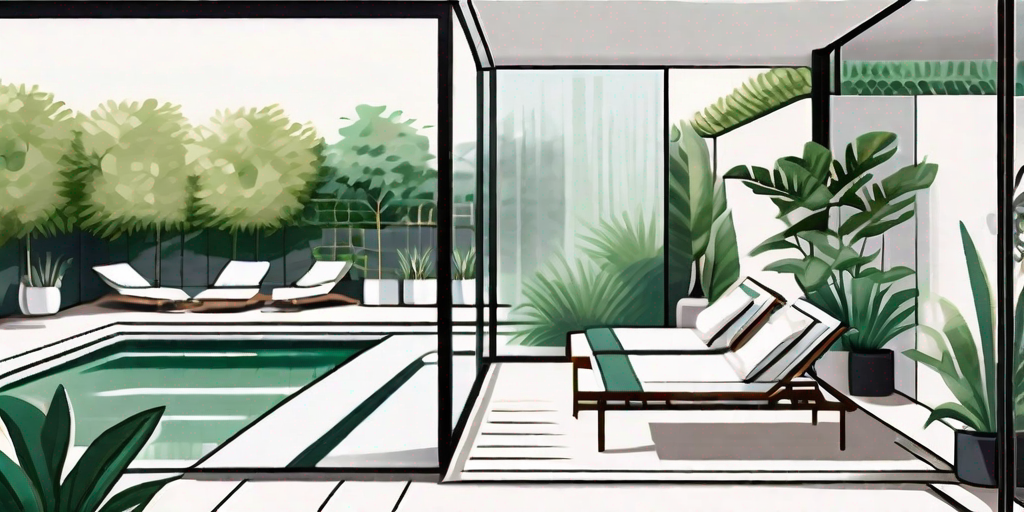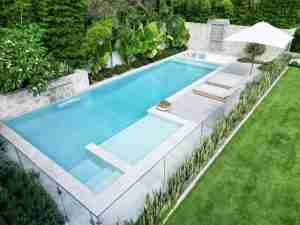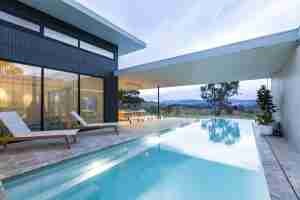Plunge pools have become a popular addition to Australian homes, offering a unique blend of relaxation, entertainment, and aesthetic appeal. However, before making an investment in a plunge pool, it is important to understand the key features, costs, benefits, and potential drawbacks associated with these luxurious amenities. By making an informed decision, you can determine whether a plunge pool is worth the investment for you and your lifestyle.
Understanding Plunge Pools
Before delving into the details, let’s first clarify what exactly a plunge pool is. Essentially, a plunge pool is a small, shallow pool that is perfect for cooling off, relaxing, or even exercising. It is typically designed to accommodate only a few people at a time, making it an ideal option for those with limited space.
Plunge pools have become increasingly popular in recent years, as more and more people are looking for ways to create a tranquil oasis in their own backyard. These pools offer a refreshing escape from the summer heat, allowing you to take a quick dip or a refreshing plunge whenever you desire.
What is a Plunge Pool?
A plunge pool is a compact, self-contained pool that is designed for a quick dip or a refreshing plunge. Unlike traditional swimming pools, which are typically large and deep, a plunge pool is shallower and smaller in size. This makes it well-suited for those who want to enjoy the benefits of a pool without the need for extensive space.
One of the key advantages of a plunge pool is its versatility. While it may be smaller in size, it can still offer a range of features and benefits that rival those of larger pools. For example, many plunge pools are equipped with powerful jets that provide a soothing massage experience. This makes them a popular choice for individuals who want to enjoy the therapeutic benefits of hydrotherapy without the need for a larger, more expensive spa.
The Unique Features of Plunge Pools
Plunge pools offer a range of unique features that set them apart from traditional swimming pools. Firstly, their compact size makes them more affordable and easier to install, making them a popular choice for homeowners on a budget. Additionally, plunge pools can be customized to suit individual preferences, with features such as seating areas, built-in jets for hydrotherapy, and even heating options.
Another unique feature of plunge pools is their ability to blend seamlessly with the surrounding landscape. With their smaller footprint, these pools can be easily integrated into any backyard design, whether it be a modern, minimalist space or a lush, tropical paradise. This allows homeowners to create a cohesive and visually appealing outdoor living area that complements their personal style and taste.
Furthermore, plunge pools are known for their energy efficiency. Due to their smaller size, they require less water and energy to maintain, making them a more sustainable choice for eco-conscious individuals. Additionally, many plunge pools are equipped with advanced filtration systems that help to keep the water clean and clear, reducing the need for harsh chemicals.
In conclusion, plunge pools offer a compact and versatile solution for those who want to enjoy the benefits of a pool without the need for extensive space. With their unique features and customizable options, these pools can be tailored to suit individual preferences and blend seamlessly with any backyard design. Whether you’re looking to cool off, relax, or exercise, a plunge pool is a perfect addition to any outdoor living space.
The Costs Associated with Plunge Pools
While plunge pools have many advantages, it is essential to consider the costs involved before making a financial commitment. Understanding the initial installation costs and ongoing maintenance expenses will help you determine if a plunge pool is financially viable for your situation.
Initial Installation Costs
The cost of installing a plunge pool can vary depending on several factors. These include the size, design, and features of the pool, as well as any additional costs associated with site preparation and landscaping. On average, you can expect to spend between $20,000 and $40,000 for a basic plunge pool, with prices increasing for more luxurious options.
Maintenance and Operational Costs
Once your plunge pool is installed, ongoing maintenance and operational costs must be considered. This includes regular cleaning, water treatment, and energy consumption for heating and filtration systems. While these costs are typically lower than those associated with larger pools, it is important to budget for them to ensure the longevity and enjoyment of your investment.
Evaluating the Benefits of Plunge Pools
Now that we have explored the costs, let’s delve into the benefits of owning a plunge pool. Understanding the advantages will help you weigh them against the expenses and decide if a plunge pool is worth it for you.
Health and Wellness Advantages
Plunge pools offer a range of health and wellness benefits. The cool water provides instant relief from the Australian heat, allowing you to relax, cool down, and rejuvenate. Furthermore, the small size of a plunge pool makes it ideal for aquatic exercises, providing a low-impact workout that can strengthen muscles and improve cardiovascular health.
Aesthetic and Property Value Enhancement
In addition to the health benefits, a plunge pool can enhance the aesthetic appeal and increase the value of your property. Its sleek design and compact size can complement any outdoor space, creating an oasis for relaxation and entertainment. Furthermore, in the competitive Australian property market, a well-maintained plunge pool can be a selling point that sets your home apart.
Potential Drawbacks of Plunge Pools
While the benefits of plunge pools are enticing, it is important to consider the potential drawbacks as well. By being aware of these limitations, you can make an informed decision and avoid any disappointments down the line.
Space Requirements and Limitations
One of the primary drawbacks of plunge pools is their limited size, which may not be suitable for those with large families or those who enjoy hosting gatherings. Additionally, the shallowness of the pool may restrict certain activities, such as diving or vigorous swimming. It is crucial to assess your space requirements and lifestyle preferences before committing to a plunge pool.
Safety Considerations
As with any pool, safety should be a top priority. The small size of a plunge pool may present some safety considerations, especially if you have young children or pets. Proper fencing, secure covers, and constant supervision are essential to ensure the safety of all individuals around the pool.
Making the Decision: Is a Plunge Pool Right for You?
After weighing the costs, benefits, and potential drawbacks, it’s time to evaluate whether a plunge pool is the right investment for you. Consider the following factors to make an informed decision:
Assessing Your Lifestyle and Needs
Think about how you envision using your pool and how it aligns with your lifestyle. If you enjoy intimate gatherings, relaxation, and aquatic exercise, a plunge pool may be perfectly suited to your needs. However, if you frequently host large events or desire a pool for extensive swimming, other pool options may be more suitable.
Weighing the Pros and Cons
Reflect on the advantages and disadvantages outlined in this article. Consider your budget, available space, and long-term plans for your property. By carefully weighing the pros and cons, you can confidently determine whether a plunge pool is worth the investment for you.
In conclusion, plunge pools offer a range of benefits, from relaxation and exercise opportunities to aesthetic enhancement and property value increase. However, it is essential to consider the costs, space limitations, and safety considerations before making a decision. By assessing your lifestyle and needs, as well as evaluating the merits and drawbacks, you can determine whether a plunge pool is the right investment to enhance your Australian home and lifestyle.




